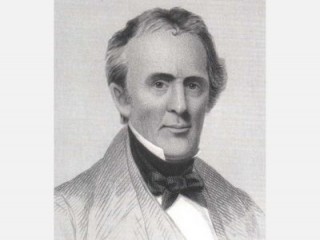
Benjamin Silliman biography
Date of birth : 1779-08-08
Date of death : 1864-11-24
Birthplace : Trumbull, Connecticut, U.S.
Nationality : American
Category : Science and Technology
Last modified : 2011-01-17
Credited as : Chemist, naturalist and editor,
The most prominent and influential man of science in America during the early 19th century, Benjamin Silliman was a chemist, naturalist and editor.
Benjamin Silliman was born on Aug. 8, 1779, in what is now Trumbull, Conn., and brought up in nearby Fairfield. He entered Yale in 1792 at the age of 13, graduating in 1796. He spent 2 years partly at home and partly teaching in a private school in Connecticut, then returned to Yale to begin studying law and to tutor. He was admitted to the bar in 1802.
That same year, with no background for the position, Silliman was appointed to the newly established professorship of chemistry and natural history at Yale, with permission to qualify himself for the job before beginning his duties. His preparation included attending lectures at the Philadelphia Medical School; work with the chemist Robert Hare; occasional visits to John Maclean, professor of chemistry at Princeton; and 2 years at Edinburgh, Scotland. In 1808 he assumed full professorial duties at Yale, lecturing in chemistry, geology, and mineralogy.
Although Silliman was a competent researcher, he was not an original scientist. However, he was without a peer in his contributions to the institutional development of science. During nearly 50 years as a professor, he was instrumental in establishing the sciences at Yale, arranging for the college to receive the finest mineral collection in America, aiding in establishing the Yale Medical School in 1813, and persuading the Yale Corporation to establish the "department of philosophy and the arts," where science could be studied intensively. Within a few years the department had grown into the Yale Scientific School, which subsequently became the Sheffield Scientific School, Yale's most distinctive contribution to American education in the 19th century.
In July 1818 Silliman issued the first number of the American Journal of Science and Arts, of which he was founder, proprietor, and sole editor for almost 20 years. Devoted to the publication of original papers, notices, and reviews in the broad field of the natural and physical sciences, it won international acclaim. Even more important, he, and later his junior editors, used the journal to introduce the latest in European science to American readers. In its pages Americans first learned of such advances as the natural system of classification, the classification of rocks in terms of the fossils they contained, the chemical approach to mineralogy, and Darwin's theory of evolution.
A brilliant lecturer, Silliman was much in demand by popular audiences for lectures on chemistry, geology, and the bearing of science on religion throughout the 1830s and 1840s. He spent his last years compiling memoirs and conducting his voluminous correspondence. He died on Nov. 24, 1864.
A biography of Silliman is John F. Fulton and Elizabeth H. Thompson, Benjamin Silliman (1947). George P. Fisher, Life of Benjamin Silliman (2 vols., 1866), is useful primarily for its verbatim quotations from reminiscences, diaries, and correspondence. For Silliman's part in establishing the teaching of science at Yale see Russell H. Chittenden, History of the Sheffield Scientific School of Yale University, 1846-1922 (2 vols., 1928).
Benjamin Silliman and his circle: studies on the influence of Benjamin Silliman on science in America: prepared in honor of Elizabeth H. Thomson, New York: Science History Publications, 1979.
Brown, Chandos Michael, Benjamin Silliman: a life in the young republic, Princeton, N.J.: Princeton University Press, 1989.
















